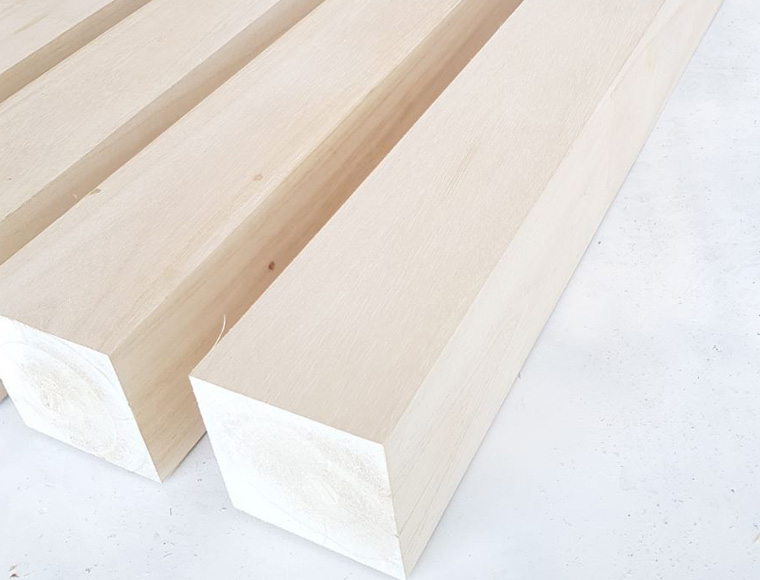
The Paulownia wood is still little known in almost all continents, but highly appreciated in demanding countries such as Asia.
It has innumerable advantages over other woods; it is extraordinarily light, with a density of around 0.3 kg/dm3, has a hardness of 1.4 kN, a flexural modulus of 6.3 GPa, a modulus of rupture of 42MPa, and a compressive modulus of 20 MPa. Due to its lightness and absence of silicates, it is one of the easiest woods to work with and has great dimensional consistency and stability. It is waterproof and rot-proof, resistant to fungi and immune to termites, has a very high fire point, allows much thinner veneers and sheets than ordinary woods, is suitable for exteriors and is particularly suitable for interior paneling and cladding. Paulownia wood has excellent impregnation to stains and lacquers.
On the other hand, Paulownia wood has an unmistakable timbre of nobility, as evidenced by its proven acoustic and resonance properties that are unbeatable for musical instruments (flutes, guitar cases, etc.). The so-called empress tree allows for a distinguished, light, weightless finish, ideal for combining modern design lines with the traditional warmth of the wood.
These are the reasons why Paulownia wood has an immense future and will allow them to offer more attractive products at a time when physical-mechanical properties, aesthetics and environmental commitment determine the choice.
While it is true that the wood is hardly known, its undoubted quality and fresh appearance, together with its novelty and discreet exoticism, give it a great competitive advantage over other woods at similar prices.
Paulownia wood - kiri is its Japanese name - can remind us of ash wood, but with a much finer texture, greater softness and shine, giving its sapwood and heartwood, similar to a Mediterranean white, that ethereal oriental touch of refinement.
Paulownia is synonymous with lightness, harmony and coherence. It is an ideal material for modern and future interior design. Although the wood industry is justifiably attached to traditional materials, it is time to introduce an aesthetic finish at a higher level, offering potential customers the added value of a semi-precious wood at the same price of ordinary wood and with additional advantages in the workmanship.
The Madeplax Group, aware of the need for new products that meet the demands of its customers and in its continuous research and development work, offers new alternatives capable of meeting the demands of today's market.

